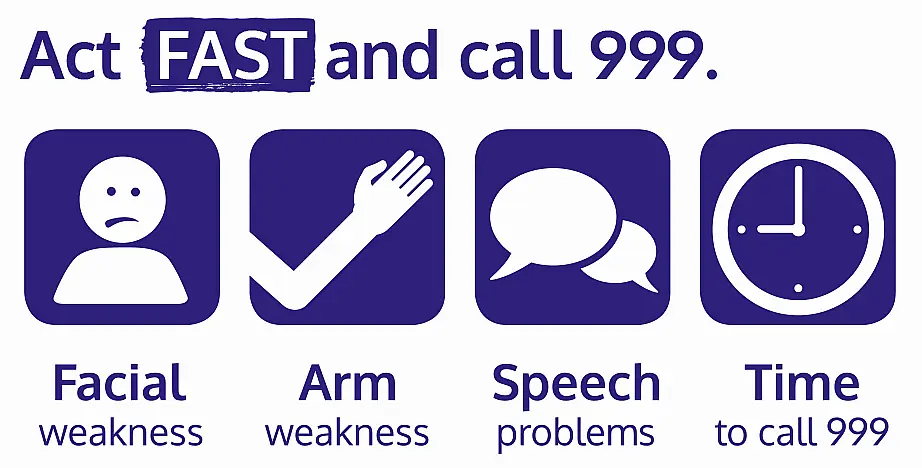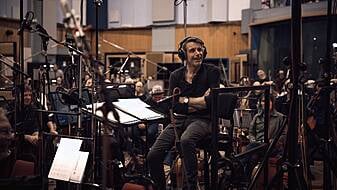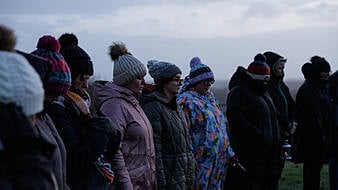Although strokes are more likely as you grow older, they can happen at any age – as former Coronation Street actor Chris Fountain recently discovered.
The 35-year-old soap star, who played Tommy Duckworth in Corrie, recently had a mini stroke (also known as a transient ischaemic attack or TIA). In an Instagram post he wrote: “After waking up unable to speak properly or read aloud, I went to hospital with a suspected mini stroke…”
“This was confirmed after a number of scans. I was in complete shock, inundated with questions. Why had this happened? What does this mean going forward? Will this happen again? It was a terrifying experience, but could have been a lot worse,” he continued.
Tests revealed the actor had a hole in his heart, which had caused the blood clot to travel to his brain, triggering the stroke.
Alexis Kolodziej, an executive director at the Stroke Association, explains while most people who have a stroke are older, younger people can have them too, including children. One in four strokes happen to people of working age.
“There’s no way to know whether you’re having a full stroke or a mini-stroke, and if you get any symptoms ideally you should call 999, as you normally need to get urgent treatment,” advises Kolodziej.
Strokes happen when the blood supply to part of the brain is cut off, either through a clot or a bleed, killing brain cells. The resulting brain damage can affect speech and movement, and how you think and feel. The effects depend on where in the brain the stroke occurs, and how big the damaged area is.
Use the FAST test to identify the signs of stroke.
Face - can the person smile?
Arms - can they raise both arms?
Speech - is their speech slurred?
Time to call 999 if you spot any of these signs.
In most cases #TeamNEAS will send an #Ambulance to assist: https://t.co/yeprWGrLaK pic.twitter.com/wAQJ2zD55W— Stroke Association (@TheStrokeAssoc) October 6, 2022
Kolodziej explains that TIA, which is what Fountain suffered, is the same as a stroke, except the symptoms only last for a short time. However, it’s a warning that you’re at risk of having another stroke, with the risk greatest in the first days and weeks after the TIA, and Kolodziej stresses it’s important to find out what caused it.
“You can get on top of any key risk factors like high blood pressure, or as in Chris’s case, a hole in the heart, and receive treatment to reduce the risk of you going on to have a full stroke,” she explains.
Whatever the type of stroke or the reason it happens, Kolodziej stresses it’s vital to know how to spot the signs, as prompt medical attention can prevent further brain damage.
Kolodziej says the FAST test can help you recognise the most common signs of a stroke, including…

Facial weakness
Can the person smile? Has their mouth or eye drooped? “If you have sudden facial weakness – maybe your face drooping on one side – it’s a common sign,” says Kolodziej. “Normally, when it’s face drooping it’s quite obvious, but we often hear stories of people trying to explain symptoms away.”
Arm weakness
According to Kolodziej, this may be someone not being able to raise both arms and keep them there.
Speech problems
Can the person speak clearly and understand what you say? Kolodziej says: “If slurred or disordered speech suddenly comes on, or as in Chris’s example, you wake up and it’s there, you should be calling 999 because it’s a key risk factor and it’s definitely not worth waiting to see if it resolves itself.”

Time to call 999
If you see any of the three signs, you should ring 999 immediately. “Treatment needs to be delivered within four to five hours,” stresses Kolodziej. “Time is of the essence, as the sooner you get treatment, the better outcome you have. It doesn’t have to be all three of the symptoms – if you have just one, you should call 999.”
In addition to the FAST symptoms, other possible signs of a stroke include…
Sudden blurred vision or loss of sight
“These symptoms almost always come on suddenly,” stresses Kolodziej, who says vision problems may be in one or both eyes.
Sudden memory loss or confusion
“Again, this is very sudden, and that’s what differentiates it from something that might get worse over time,” says Kolodziej.
Weakness or numbness
There may be weakness or numbness on one side of the body, says Kolodziej. “If the stroke is on one side of the brain, then it’ll be the other side that’s affected. For example, all of a sudden someone might have a really intense feeling of pins and needles down one side of the body.”

Dizziness or a sudden fall
Dizziness, or even falling in older people, can be quite common, and Kolodziej warns: “When people have milder symptoms, that’s when there’s a real risk of them saying, ‘Maybe it’s just a funny turn, I’ll wait and see’. It’s really important that people know it’s just as important with a TIA as it is with a full stroke to get urgent medical attention.”
Sudden severe headache
This wouldn’t usually be a ‘normal’ headache, but one that comes on very quickly and is severe, explains Kolodziej.







